Saffron Spices is worth more than gold—literally. This vibrant, crimson-hued spice can cost up to $5,000 per pound, making it the most expensive spice in the world. But why? Its value lies in the labor-intensive process of harvesting the saffron spice flower, along with its unparalleled aroma, flavor, and health benefits. It’s not just a pantry ingredient; it’s a powerhouse addition to your kitchen and beyond.
Yet, for something so precious, saffron often feels intimidating to use. How much do you need? Are you storing it correctly? Is that vibrant thread you bought even real saffron? These are questions I’ve heard time and again from fellow spice enthusiasts. That’s why I’ve compiled 13 game-changing saffron hacks you won’t want to miss. From extracting bold flavors to budget-friendly storage tips, by the end of this post you’ll know how to treat saffron like a pro. Whether you’re a seasoned chef or a curious beginner, these hacks will elevate your culinary skills and maybe even your health. Let’s unravel the secrets of saffron spices together—starting now.
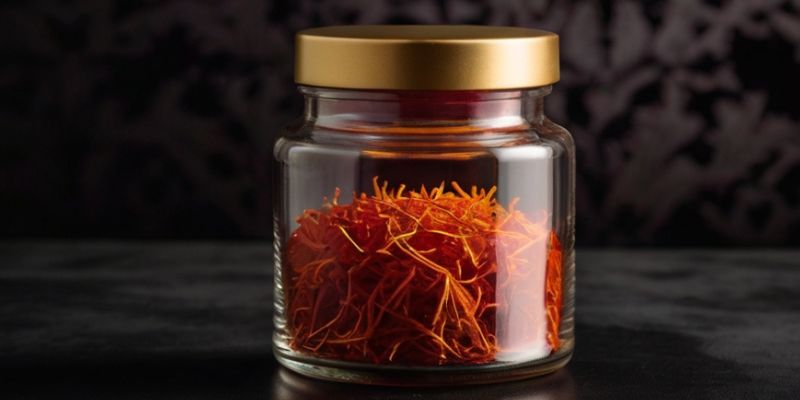
What Makes Saffron Spices Special?
Saffron isn’t just any spice; it’s an agricultural treasure. It comes from the stigma of the crocus sativus, also known as the saffron spice flower. Each flower produces only three red stigmas, which are hand-harvested, dried, and packed carefully for consumption. Here’s the catch—it takes approximately 75,000 flowers to produce just one pound of saffron. This explains why saffron is so rare and costly.
On top of its scarcity, saffron’s versatility as both a culinary ingredient and wellness booster gives it a unique place in cultures worldwide. Authentic saffron offers a bright red hue, bold aroma, and rich saffron spice flavor that can’t be replicated by synthetic alternatives. It’s a testament to patience and craftsmanship, a true “gold” in the spice world.
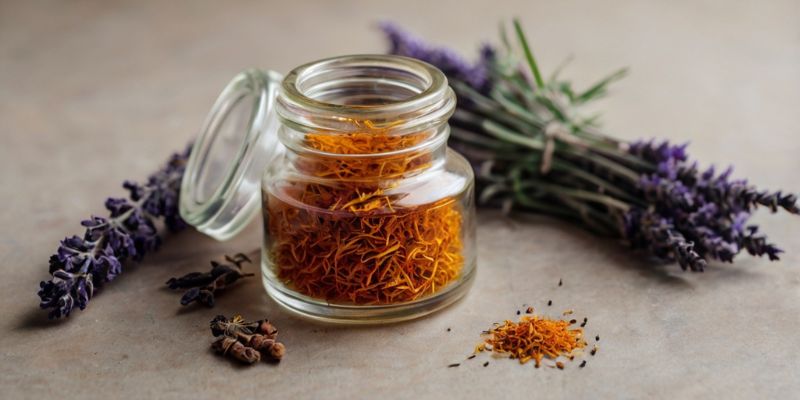
A Quick Glimpse Into Saffron Spice History
Saffron traces its origins back over 3,000 years. Ancient Persia (modern-day Iran) regarded saffron as a symbol of prosperity, using it in rituals, royal feasts, and even dyeing fabrics. Indian and Greek civilizations used saffron for medicinal purposes, including improved digestion and mood enhancement.
During the Middle Ages, saffron became a sought-after item along global trade routes, including the famed Silk Road. It appeared in European recipes like paella and bouillabaisse, becoming a luxury item associated with nobility. Today, saffron continues to thrive, prized by chefs, health enthusiasts, and home cooks alike.
13 Epic Saffron Spices Hacks
Hack #1 – Enhance Everyday Recipes with a Pinch
Saffron isn’t reserved for extravagant dishes—it can easily find a place in your everyday cooking. Adding just a pinch of saffron to staples like rice, soups, and stews can elevate the flavor profile, turning simple meals into aromatic masterpieces. For instance, mix a few strands of saffron into white rice to create a vibrant, golden-hued dish reminiscent of Indian biryani. Similarly, adding saffron to vegetable soup can provide an earthy, slightly floral undertone that transforms the broth.
Looking for a comforting drink? Try making golden milk. Warm a cup of milk, steep in a few strands of saffron, and add a touch of honey. It’s soothing, packed with nutrients, and feels almost indulgent on a cold day. Experiment with everyday recipes, and you’ll quickly realize how versatile saffron spices can be.
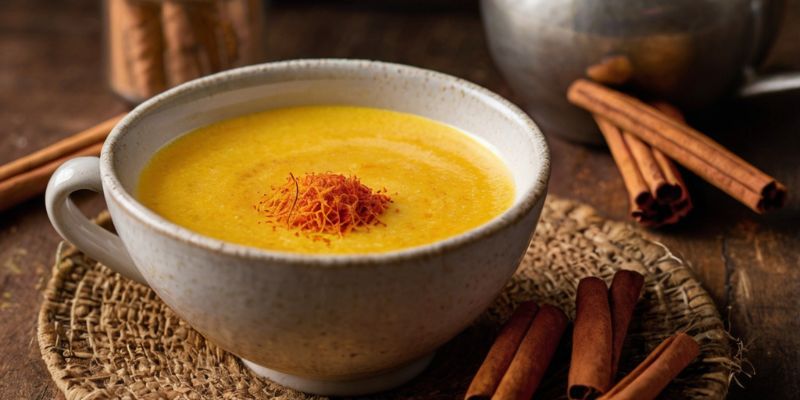
Hack #2 – Unlock Maximum Flavor Through Proper Steeping
Steeping saffron is the key to unlocking its full flavor and aroma. Many first-time users make the mistake of throwing a few threads directly into their dishes, only to wonder why they didn’t get the rich depth of saffron’s renowned taste. To avoid this, steep saffron threads in warm (but not boiling) liquid such as water, milk, or broth for at least 15–20 minutes. During this time, saffron releases its potent pigments and aroma into the liquid.
For example, if you’re making saffron risotto, you can pre-steep the threads in warm chicken stock and then gradually add that liquid into your rice. This ensures an even saffron flavor throughout the dish. Pro tip? Use the liquid saffron infusion to add subtle golden tones to mashed potatoes, pasta dough, or even bread-making for an elegant twist.
Hack #3 – Grind It Fine for Even Distribution
A mortar and pestle is your saffron power tool. While saffron threads look beautiful sitting in your spice jar, they can sometimes clump together during cooking, leading to uneven flavor distribution. Grinding saffron into a fine powder before steeping can solve this problem and allow you to make the most out of even the tiniest amount.
Once ground, your saffron becomes easier to dissolve into liquids, ensuring that its rich taste spreads evenly through your dish. Try this for recipes like Persian tahdig (crispy rice) or desserts like saffron panna cotta, where even distribution of color and flavor makes all the difference. You’ll find that your dishes not only look luxurious but taste equally balanced.
Hack #4 – Store Safely to Retain Potency
Saffron’s delicate aroma and flavor can deteriorate quickly if it’s not stored properly. Keep it away from light, air, and moisture. Use an airtight container, preferably one made of glass or metal, and store it in a cool, dark place. Avoid plastic containers, as they might allow slight changes in air pressure that can affect saffron’s freshness.
High humidity environments, such as near stovetops or windows, should also be avoided. When stored correctly, saffron can maintain its potency for up to two years! An easy trick? Add a small silica gel packet into the airtight jar to absorb any accidental moisture. By storing saffron carefully, you’re ensuring that every thread retains the flavor and aroma you paid for.
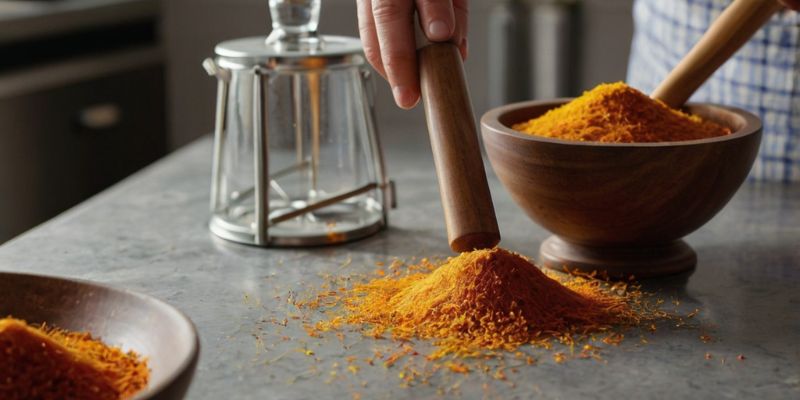
Hack #5 – Stretch Saffron Spices with Budget-Friendly Infusions
Saffron may be expensive, but with a little creativity, you can make it last much longer. One of the simplest methods is to create a saffron-infused liquid to use across multiple dishes. Steep a small number of saffron threads in warm water or milk, and transfer the infusion to an airtight bottle. Store it in the fridge and use it to flavor your recipes over the span of several days.
For instance, saffron-water can be drizzled over roasted vegetables, used to baste meats, or mixed directly into salad dressings. Saffron-infused oil is another cost-effective option—add saffron to a small bottle of olive oil and use it to flavor bread, marinades, and even pasta dishes.
Hack #6 – Amp Up Your Spice Blends
Saffron doesn’t have to shine alone. Pair it with complementary spices like cinnamon, cardamom, or turmeric to create DIY spice blends that are both aromatic and unique. For example, mix saffron, ground cardamom, and a touch of vanilla powder to create an irresistible dessert spice blend. Or, combine saffron, turmeric, and smoked paprika for marinades that work well with grilled meats or roasted vegetables.
Such saffron-spice blends are perfect for adding a creative twist to recipes like couscous or slow-cooked stews. Prepping your own blends is simple, cost-effective, and gives your dishes a signature touch.
Hack #7 – Saffron Spices in Drinks? Yes, Please!
Move over mulled wine—saffron adds a whole new dynamic to beverages. Saffron-infused tea is a popular choice. Steep a few threads in hot water along with some green tea or chamomile. Add a light pinch of honey for a soothing, fragrant drink.
If you’re feeling more adventurous, add saffron to your cocktails! A saffron-infused simple syrup (made by dissolving sugar in saffron water) will elevate a gin and tonic or margarita with luxurious notes. Even a classic lemonade can take on sophistication with a hint of saffron.
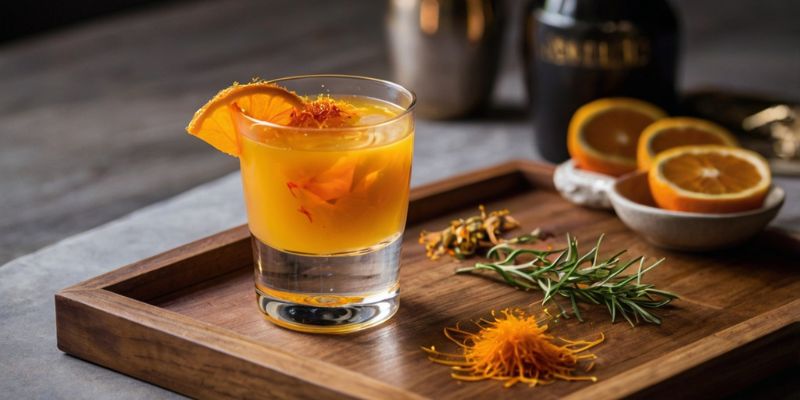
Hack #8 – Use It as a Natural Dye
Saffron’s pigment, crocin, gives it its signature golden glow. While this is stunning in food, it also makes saffron a fantastic natural dye. Simply steep saffron in a small amount of boiling water to release its vibrant color and use it for creative purposes. Cakes, pastries, whipped cream, and icings shine with saffron’s golden hue.
Beyond the kitchen, saffron can also dye fabrics for decorative or cultural occasions. Historically, saffron was used to color royal garments and religious textiles, which speaks to its significance in art and culture.
Hack #9 – Check for Authentic Threads
The saffron market is notorious for fraud. Synthetic dyes, safflower petals, or even dyed corn silks are often passed off as authentic saffron. Protect yourself by learning to identify genuine saffron. Look for crimson threads with orange tips, a strong, almost-metallic aroma, and a slightly bitter flavor when tasted raw.
Test authenticity by soaking a few threads in cold water. Real saffron releases color gradually, while fakes will release an instant, artificial color. Invest in saffron from reputable suppliers—your taste buds will thank you.
Hack #10 – Add Luxury to Your Desserts
Saffron adds subtle elegance to desserts, making them perfect for holidays or special occasions. Try using saffron in custards, puddings, or ice creams. For a Middle Eastern twist, make saffron-infused basbousa (semolina cake) or a cardamom-saffron rice pudding.
For pastries that stand out, use saffron in the dough. For instance, Swedish saffron buns (Lussekatter) showcase how saffron transforms baked goods. Its floral aroma melds beautifully with sugar, butter, and cream-based recipes.
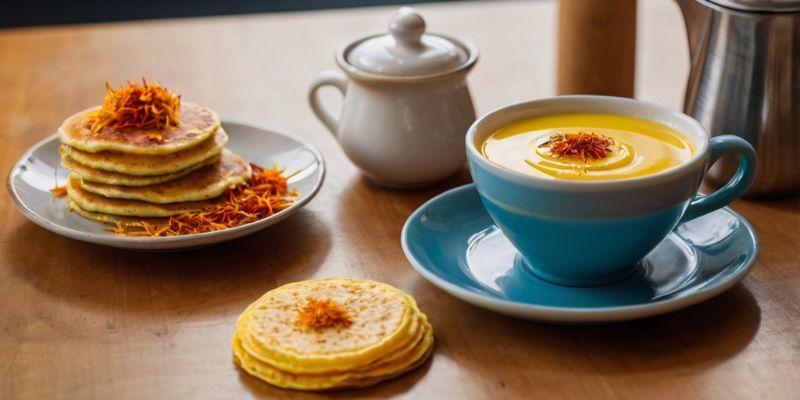
Hack #11 – Saffron Spices in Breakfast? Of Course!
Start your day on a luxurious note by incorporating saffron into your breakfast. Infuse oatmeal with saffron water, and top it with nuts, honey, and fruits. You can also add ground saffron to pancake batter or mix it into scrambled eggs for an unexpected twist of flavor and golden color.
For something quicker, sprinkle a bit of saffron-infused sugar into your morning latte, and take your coffee ritual to the next level.
Hack #12 – Relieve Stress with Saffron Spices Health Hacks
Aside from its culinary versatility, saffron is believed to have mood-boosting properties. Studies indicate saffron might increase serotonin levels and alleviate symptoms of mild depression or anxiety. Brew a soothing cup of saffron tea by steeping the threads for 10 minutes in hot water, and combine them with calming herbs like chamomile for added relaxation.
Need a beauty boost? Saffron-infused water can also be used as a natural skin toner renowned for its antioxidant properties and glowing effect.
Hack #13 – Invest in Quality Over Quantity
When buying saffron, quality trumps quantity every time. While it might seem tempting to go for a bargain, low-quality or fake saffron won’t deliver the same robust aroma, flavor, or health benefits. Premium options may cost more, but because saffron is so potent, you only need a tiny amount to achieve remarkable results.
A small jar of high-quality saffron—stored and used wisely—can last for months, maybe even longer. Look for saffron labeled as “Grade A” or “All Red,” which indicates the finest quality available.

The Distinctive Saffron Spices Flavor
What does saffron taste like? It’s a unique symphony of sweet, floral, and earthy notes. Top chefs worldwide use saffron to create elevated culinary experiences. You’ll taste saffron’s magic in Mediterranean dishes like Spanish paella or Persian tahdig—the crisp, golden layer of rice enriched with saffron spice flavor. It’s also a star in Indian cuisine, where it flavors and colors biryanis and sweets.
Pair saffron with ingredients like almonds, honey, or citrus to accentuate its subtle sweetness. And for savory dishes, it shines in seafood, lamb, and vegetarian recipes.
Saffron Spice Health Benefits Backed By Science
Beyond its role as a culinary gem, saffron spices offer impressive health benefits. Packed with antioxidants like crocin and safranal, saffron fights inflammation and oxidative stress. Some studies suggest saffron may improve mood and reduce symptoms of depression, while others point to potential benefits for memory and learning.
Saffron’s potential to support eye health is also noteworthy, with research showing it might slow down macular degeneration. And if those aren’t enough reasons, saffron has traditionally been used to aid digestion and boost the immune system.
Choosing and Buying Authentic Saffron Spices
With so many fake saffron products circulating the market, you must choose wisely. Look for deep red threads, avoid powders (which are easier to adulterate), and buy from trusted retailers. High-quality saffron has a distinctive aroma and flavor—don’t settle for anything less.
Discover how Himalayan Pink Salt can transform your health and wellness in our detailed guide on 9 Fascinating Himalayan Pink Salt Benefits.
Final Thoughts on Saffron Spices
Saffron spices are the ultimate culinary and wellness upgrade. Whether you’re extracting its flavor, amplifying your recipes, or exploring its health benefits, these 13 hacks will help you make the most of this golden treasure. The next time you reach for saffron, remember—you’re not just using a spice; you’re using a piece of history, flavor, and science distilled into crimson threads. Now it’s your turn to unlock saffron’s full potential.
Discover more about the incredible benefits of moringa seeds in our detailed guide: 13 Special Ways Moringa Seeds Enrich Lives.
Stay connected with us!
- Follow us on Instagram: @RoastedKitchen25 for daily cooking inspiration.
- Subscribe to our newsletter for exclusive recipes, expert tips, and kitchen hacks straight to your inbox!
FAQ Section on Saffron Spices
What is saffron spices?
Saffron is the dried stigma (thread-like structures) of the crocus sativus flower, often referred to as the “saffron spice flower.” Known as the most expensive spice in the world, saffron is prized for its vibrant crimson color, distinct aroma, and unique flavor. Harvesting saffron is a painstaking process, as each flower produces only three stigmas that must be carefully handpicked. Saffron spices are used in a variety of cuisines, prized for their ability to add color, flavor, and even health benefits to dishes. Its flavor is often described as a mix of floral, sweet, and slightly earthy notes, making it one of the most versatile spices in any pantry.
What spices go with saffron spices?
Saffron works beautifully with spices that complement its floral and earthy flavor profile. Common pairings include cardamom, cinnamon, and turmeric. Cardamom enhances saffron’s floral notes, often creating magic in dishes like saffron rice pudding or Persian desserts. On the other hand, cinnamon adds warmth and sweetness, making it perfect for baked goods or slow-cooked stews infused with saffron. Turmeric, which shares a similar golden hue, makes for a striking combination in savory dishes such as Middle Eastern chicken or lamb stews.
What spices pair well with saffron spices?
While saffron is incredibly versatile, it shines when paired with strong aromatic spices like cloves, nutmeg, or even fennel seeds. Cloves add depth to saffron in broths and curries, while nutmeg’s warm and slightly sweet flavor balances saffron in creamy desserts or beverages. Fennel seeds, with their mild licorice-like aroma, enhance saffron’s complex flavor in Mediterranean or Indian recipes. These spices come together with saffron to create layers of flavor in both sweet and savory dishes.
What are the health benefits of saffron spices?
Saffron isn’t just a culinary treasure; it’s a nutritional powerhouse packed with antioxidants like crocin and safranal. Research suggests saffron may help improve mood, reduce depression, and support eye health by slowing macular degeneration. Additionally, saffron is used traditionally to aid digestion, boost immunity, and fight inflammation. Modern studies are even exploring saffron’s potential neuroprotective benefits for memory and cognitive performance. From tea to culinary dishes, incorporating saffron into your diet may offer a range of wellness perks.
How do I know if saffron spices is real or fake?
Spotting authentic saffron can be tricky, but there are clear giveaways. Real saffron threads are deep crimson with slightly orange tips, indicating freshness. Fake saffron often has a uniform color, lacks aroma, and feels brittle. To test authenticity, soak a few threads in water—real saffron will release its color gradually and dye the water a golden yellow hue. If the color appears instantly, it’s likely an artificial dye. Always buy saffron from reputable sources and seek labels like “Grade A” or “All Red” for the highest quality.

Food has been at the heart of my life since childhood. My father, a passionate restaurateur, owned and ran Cave Way, a beloved restaurant in Narayanganj, Bangladesh. For 19 wonderful years, Cave Way delighted customers with its warm atmosphere and mouthwatering dishes. It was more than a restaurant; it was a community landmark. When my father passed away, the restaurant’s doors closed, but its legacy lived on in me. As a businessman and food enthusiast, I’ve always felt a connection to the joy and stories that food brings into our lives. Roasted Kitchen is my way of honoring that legacy, sharing my passion, and connecting with others who love cooking as much as I do.

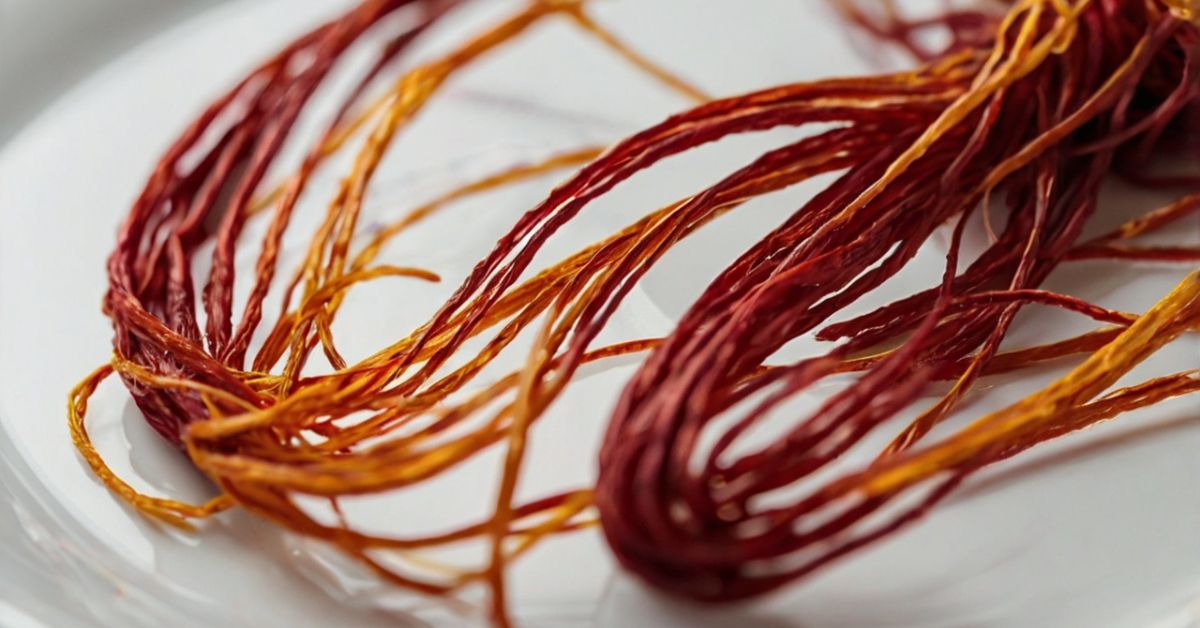
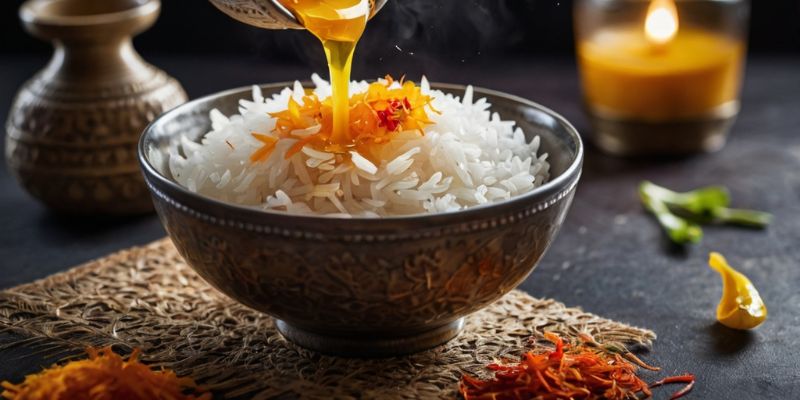








 Subscribe to our free newsletter for tips, tutorials, and insights!
Subscribe to our free newsletter for tips, tutorials, and insights!